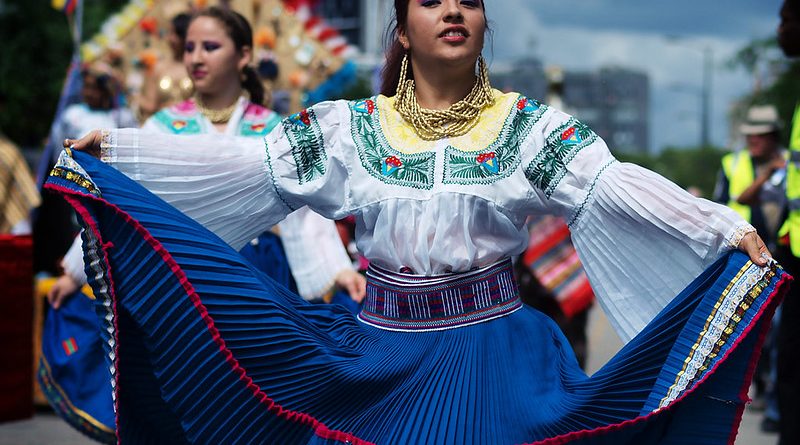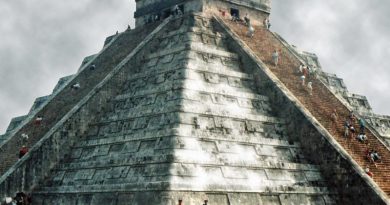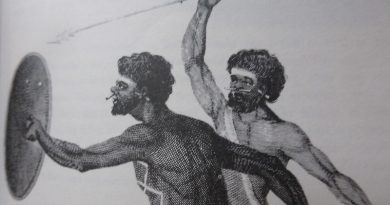Latin American Independence Movements
The political chaos in Spain predictably resonated throughout its empire, most significantly in Spanish America, which became a battleground for several independence movements during the early 19th Century, marking the end of the Spanish Empire. Whilst inextricably linked by a single motivation, the independence movements were nonetheless separate conflicts rather than a singular rebellion against the Spanish Crown. These wars differed from one another in nature, some being more conventional conflicts than others. While the Empire retained control of Cuba and Puerto Rico, all other major territories were lost during this period as they successfully attained independence.
Argentina
The Argentine Independence War lasted eight years from 1810-18. Its beginnings are generally traced back to the May Revolution, itself a direct reaction to the Peninsular War. This was the first successful revolution of the Latin American Independence Movements. The Viceroy was successfully overthrown by the Primera Junta, beginning the Independence War. Formal independence was not declared until 1816. The Primera Junta waged a number of military campaigns against the Viceroyalty to strengthen its position. The seizure of Montevideo is considered to be a key turning point in the conflict. The Chile campaign in 1818 is generally considered to be the final act of the Argentinian War for Independence.
Bolivia
Closely connected with the Argentine Independence War, the uprising in Bolivia was set into motion following the upheaval from the May Revolution. Initially known as Upper Peru, Bolivia earned its namesake from the revolution’s most prominent military leader Simon Bolivar. Rebellions in La Paz and Chuquisaca in 1809 gradually spread throughout the territory, but were easily crushed by loyalist forces. Despite this, scattered guerrilla forces kept the revolution alive, although it was relatively ineffective for the next 16 years. Bolivar, supported by royalist defectors led by Antonio Jose de Sucre, deposed the Viceroyalty for good. The newly-liberated Upper Peru maintained its independence rather than merging with other countries, and was rechristened Bolivia after the uprising’s most important leader.
Chile
The Chilean War for Independence was arguably the most divisive revolution of the Spanish American Independence Movements. Support for its cause was certainly not unanimous, unlike many others, and the conflict left the population bitterly divided. The conflict escalated from an anti-elite uprising into a full-blown civil war. The origins were similar to other Spanish American Revolutions but there was greater debate over to the extent of self-government the colony should exert. Although the patriots had early initial success, the Battle of Rancagua in 1814 saw the Spanish Viceroyalty reestablish military supremacy, causing the Revolution’s leaders to flee in exile in Argentina. Whilst in exile, the Carrera Brothers and Bernardo O’Higgins earned the support of the Argentinians. The Spanish rule in Chile in this period grew increasingly ineffective, and intensified the people’s resentment towards the regime, winning over more supporters of independence. Armed conflict resumed in 1817, and independence was declared in 1818 following a string of high-profile victories over the Royalists. Despite this, bitter divisions remained apparent within Chile, particularly between supporters of O’Higgins and the Carreras. The three brothers were all executed by 1821, with O’Higgins emerging the leader-apparent of the newly-independent state. His standing was far from secure however, and tensions between the oligarchy and the military remained high for nearly a decade. While the war for independence was over, political chaos raged rampant in Chile until 1829 when a Junta was installed with the aid of the military.
Mexico
Arguably the most significant conflict of the Spanish American Revolutions, the Mexican War of Independence was also motivated by the Spanish Empire’s decline and other colonial uprisings. The conflict lasted over a decade, with independence being formally declared in 1810 and formally recognised in 1821. The independence movement had repeated stops and starts, with many of its leaders being defeated and executed. The revolution’s chief instigator was a Catholic Priest-Miguel Hidalgo y Costilla, whose famous speech ‘The Cry of Dolores’ inflamed the rebellious passions of the people. Despite raising an army of 90,000 volunteers, Hidalgo was easily defeated and his army dissolved. Secular Priest Jose Maria Morelos united the disparate separatist movements in 1813 as the Congress of Chilpancingo, which was also quelled, causing the movement to transform as a guerrilla effort lead by Vicente Guerrero. Ultimately, independence was brought about with the aid of the Creole elites, who aligned themselves with the increasingly powerful insurgency. The Mexican Empire was established in 1821, shifting to a federal republic in 1823 following internal conflict.
Peru
Peru initially remained loyal to the Spanish Empire following its descent into crisis, mainly due to the Peruvian aristocracy’s deep Conservatism and the more intense presence of Spaniards in Peru. Interestingly, Peru’s independence was instigated by external forces, most notably Argentinian General Jose de San Martin, motivated by a desire to control the colony’s silver trade. Due to the strong Spanish military presence in Peru, de San Martin enlisted the aid of Simon Bolivar, who eventually forced him out of the effort, refusing to share leadership. Bolivar’s campaign proved successful. Independence was declared in 1821 while the decisive victory in the Battle of Ayacucho in 1824 finally decimated any remaining Spanish resistance.
Venezuela
Anti-Spanish sentiments were arguably more prevalent in Venezuela than any other Latin American colony, with the failed uprising in 1797, prior to the downfall of the Spanish Empire, supporting this. The conflict proper began in 1810 as the Supreme Caracas Junta was established following the ousting of Vicente Emparan, the Captain General of Venezuela. One year later, seven of the colony’s ten provinces declared independence, ushering in the short-lived First Republic of Venezuela. This government was the first Spanish American colony to declare its independence. Despite this, one year after its formation, the government fell, weakened by the 1812 Caracas Earthquake and the subsequent Battle of La Victoria, which saw Spanish forces regain dominance. Military liberator Simon Bolivar proceeded to launch a second ‘Admirable Campaign’, forming the Second Republic of Venezuela. This too did not last, due to a combination of internal unrest and a resurgent Spanish Royalist military. Ultimately, Venezuela’s liberation came about through Bolivar’s liberation of New Granada (modern-day Colombia) in 1819-20. Bolivar’s military gambit proved to be a decisive moment in the liberation of Spanish America, significantly enhancing his military power and allowing him to finally seize control of Venezuela from the Spanish. Venezuela, Colombia, Panama and Ecuador together formed the Republic of Gran Colombia, with Bolivar as its President. Venezuela separated from this union in 1830, declaring itself a sovereign state.
Legacy
While the monarchy remained intact following the devastating Napoleonic period, the Empire was left a shadow of its former self. Internal instability was exacerbated by the newfound independence of the Empire’s most significant colonies in the Americas. Its remaining major colonies-Cuba, Puerto Rico and the Philippines were taken over by the United States following the Spanish American War of 1898 and its African colonies were gradually relinquished over the 19th and 20th Centuries. By this point, the Spanish Empire was an empire in name alone, its one-time global supremacy shattered entirely.
Despite its humiliating downfall, the Spanish Empire’s legacy remains intact today, for better or for worse. The Americas’ cultural and linguistic identity is overwhelmingly informed by centuries of Spanish rule. There are over 470 million Spanish speakers globally, due Spain’s territorial dominance of the Americas. Besides language, the Catholic Church is Spain’s greatest cultural legacy in the Americas. Architecture in the Americas is also greatly informed by years of Spanish rule. The cultural identity of the Americas remains the Spanish Empire’s most enduring and obvious global legacy.




